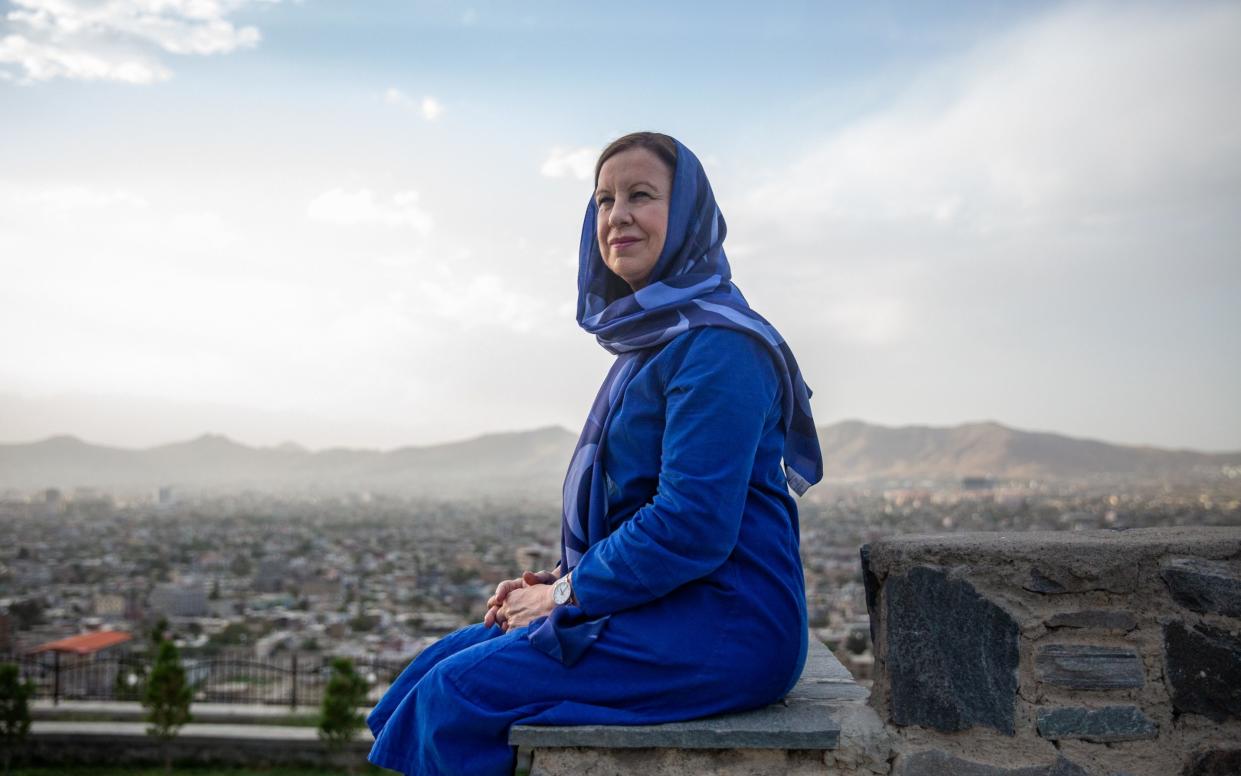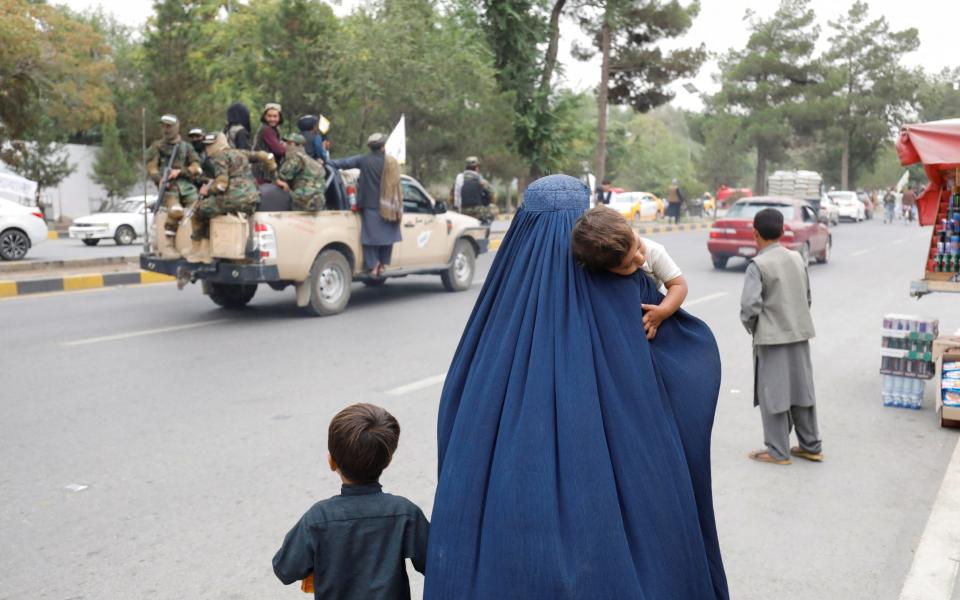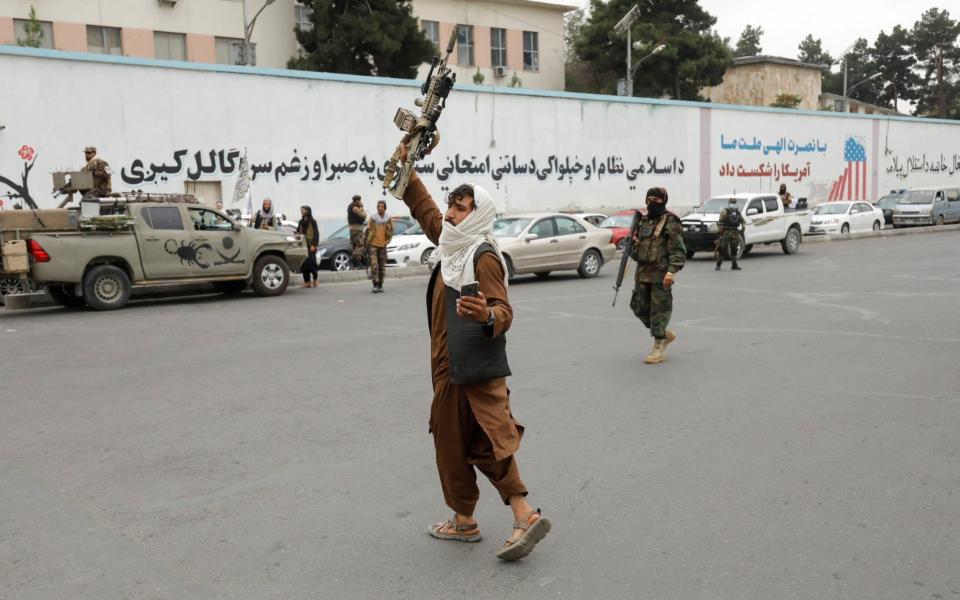Lyse Doucet on Kabul today: ‘Fewer women are venturing out, but they haven’t completely disappeared’

It is a Monday in August and I’m standing in a handicraft market in Kabul. Dresses billow in the breeze. Each has distinctive embroidery, the pattern of a particular province of Afghanistan. But the female mannequins on which they are displayed no longer have heads – Taliban orders.
The faceless females seem to symbolise a year of increasingly authoritarian rule by the fighters who swept into Kabul on 15 August 2021, as US-led forces ended a 20-year-long engagement.
There is an effective ban on girls’ secondary education; growing pressure on women working in ministries and government offices; and a tightening web of edicts restricting women’s lives. But women are pushing back in whatever ways they can.
‘We aren’t as weak as we were 20 years [ago],’ insists Amina Ahmadi, ex-general director of the Afghanistan Revenue Department at the Ministry of Finance, nodding to the first repressive Taliban rule of the 1990s when women were denied education and opportunities to work. Although Ahmadi has now left the country, she is helping to mobilise dozens of educated women at the ministry who have been told to stay home and give their jobs to male relatives.

Ask them about hope, however, and they have very little. ‘I don’t believe in hope but I believe in our right to work,’ says Ahmadi.
Over the past two decades, the country has produced women politicians, ambassadors and advisors, and a generation of schoolgirls who dared to dream bigger than ever. Now its public face is exclusively male, bearded, and Taliban.
This month’s revelation that al-Qaeda leader Ayman al-Zawahiri had been killed in a US strike on the balcony of a villa in Kabul, streets from the British embassy, underlines the Taliban’s conundrum in trying to move from guns to government. The world is struggling to deal with this insurgent movement turned de facto authority. Meanwhile, the economy has all but collapsed.
‘There are no customers,’ a tailor in the market tells me as he scissors a length of shiny cloth. ‘I had only two sales last month.’
‘There are no jobs, no money,’ his assistant adds. The arcade of tiny one-room shops is eerily empty except for a group of women huddled in a corner inspecting swatches.
In places, the heart of the capital feels like a Taliban town. Walls once covered with colourful murals extolling the virtues of democracy are now whitewashed with Islamic exhortations. The tree-lined street of the Afghan foreign ministry is a parade of Taliban flags.
Even before the Taliban took charge, Afghanistan was mired in humanitarian crises. Now an underfunded aid appeal and devastating drought are taking a huge toll. Foreign aid, which once accounted for up to 80 per cent of the country’s budget, has all but vanished, and the US froze the central bank’s foreign assets.
The Western presence in the capital, previously cocooned in the Green Zone, a highly fortified labyrinth of walls within walls, sniffer dogs and security screening, is largely shuttered too. Embassies and agencies slammed their gates closed last August as staff rushed to the airport with the tide of Afghans desperate to escape. Now, the people in this warren are mainly young Talibs studying at a new madrasa.
Russia, China, Iran, Pakistan and Turkey never closed up shop here. But the European Union maintains only a minimal presence. Western envoys make flying visits, including British diplomats who recently focused on efforts to secure the release of British nationals in Taliban detention. Some other non-European embassies are quietly preparing a low-profile return or have returned already.
‘A year on, many are asking if it’s time to revisit this issue,’ says one Western diplomat whose embassy remains shut. ‘We ask, “Will we be giving the Taliban too much credit if we return, or are we restricting ourselves and our humanitarian assistance by not being here?”’
Taliban 2.0 is not the pariah state it was in the 1990s, when only Pakistan, Saudi Arabia and the United Arab Emirates recognised its repressive rule. These days Taliban officials are frequent flyers to some capitals, and meet delegations in Kabul or the Gulf State of Qatar, where they have operated a political office for many years.
‘We are still far, far apart on many issues,’ says one diplomat who visits regularly.
But the Taliban of 2022 doesn’t always speak with one voice. Some senior figures have taken issue with the closure of most girls’ secondary schools demanded by the most senior and conservative leaders, including advisors around top cleric Haibatullah Akhundzada. And edicts, particularly on what women must wear, and where they can go, can be vague and contradictory.

When I returned this month, I found fewer women venturing on to the streets of Kabul; but they haven’t completely disappeared, nor are they all covered in black chadors or the blue chadris or burkas that came to symbolise the Taliban’s first rule. ‘It’s my right within Islam to wear these colours,’ insists Fatima, a businesswoman attired in pastel patterns. Yet in universities where men and women are now segregated, and in towns and villages beyond the capital, stricter dress codes are enforced by local Taliban fighters – at times, harshly.
‘It’s not all doom and gloom,’ says Ramiz Alakbarov, deputy special representative of the UN secretary general. Aid agencies, for example, can now travel to destinations previously too dangerous to reach. That’s because Taliban attacks have ended, along with the US-led military campaign, which took a terrible toll, especially on village life.
And, for now, there’s less corruption – though there are signs it is inching back. ‘I don’t support the Taliban but they finally got rid of corrupt Afghan government officials and warlords,’ says an Afghan businessman who is doing a brisk trade selling products to foreign aid agencies.
But many educated, skilled Afghans have left; many more would if they could. Those left behind worry that the world has moved on.
‘All it amounts to are posts on Facebook,’ says Zarifa Yaqubi, an activist who teaches courses to young women to help boost morale. ‘The world has forgotten the women of Afghanistan.’

